Notebooks have evolved into sleek, powerful computers that can do most of what a conventional desktop PC can do. And more and more people replace their bulky desktop PCs with notebook computers that they can take home, on trips, or on field assignments.
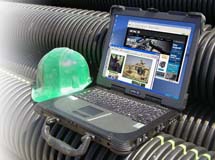
Problem is that consumer notebooks with their large, unprotected screens and plastic cases are quite fragile. Studies show that notebook failures represent an increasing cost factor in many corporations. And an increasing source of frustration.
Fortunately, there are manufacturers who make notebooks that are built specifically for tough jobs. Some make notebooks that are designed and engineered to withstand much more punishment than a standard consumer product. Others include special features and peripherals needed for specific jobs. Some notebooks, finally, are built like tanks and are nearly unbreakable.
Most (but not all) of these rugged and semi-rugged notebooks cost significantly more than their consumer market counterparts. That's because they are more expensive to build (and also because the market for them is not very large).
As always, when contemplating the purchase of such a product, you must to determine your requirements first, or else you'll pay for something you don't need.
To help you, this section contains a number of the best ruggedized notebooks out there. For years, most used standard or embedded versions of Microsoft operating system, and even almost all are running Windows 10. Almost all can take a beating. And most have performance and features comparable to those of a consumer notebook. Security is becoming an ever greater concern, and so a lot of semi-rugged and rugged machines now have fingerprint scanners, SmartCard readers, face recognition cameras, and removable solid state storage.
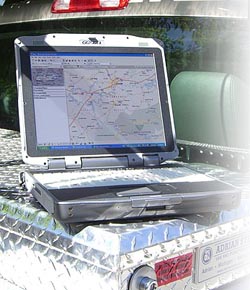 Please note that some of these products are designed and made by an OEM (such as Twinhead) and then sold by a variety of vendors under their own brands.
Please note that some of these products are designed and made by an OEM (such as Twinhead) and then sold by a variety of vendors under their own brands.
Whenever available, we added sealing ratings, operating temperature range, and shock resistance data to the specification boxes. That gives you an idea of how tough and rugged a device is, and what sort of working environment you can safely use it in.
One peculiarity of the rugged notebook market is that, for reasons of continuity and backward compatibility with add-ons and peripherals, designs often stay the same for several years. That is in stark contrast to consumer notebooks that change every few months. As a result, rugged equipment manufacturers usually update the technology inside and leave the outside alone. Market leaders like Panasonic, Getac, Durabook, DT Research or Dell are usually very quick in upgrading to the latest processor technology; smaller and more specialized manufacturers at times lag a chip generation or two behind, with no serious impact on their products to do the job.
Outdoor readable displays
Ruggedness and the need for an outdoor-readable display go hand-in-hand. If you're going to use a notebook outside, you're probably going to use it on car hoods, fallen logs, the ground, rocks, benches, concrete structures and in other difficult locations. So let's discuss display technologies a bit.
As is, most standard notebooks have transmissive LCDs. Those are very bright indoors due to the fact that their backlights strongly and evenly illuminate the screen. Outdoors, however, transmissive displays, unless they are specially treated, wash out and become unreadable.
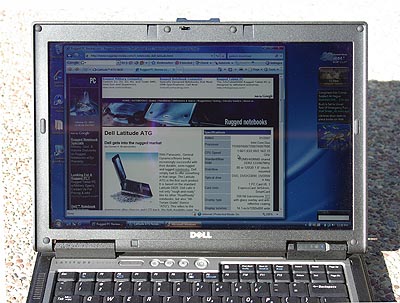 Some LCD displays are reflective, which means they reflect the ambient light and thus are readable outdoors. Some early Pocket PCs had purely reflective LCDs and there were some notebooks that used reflective displays also. The problem with purely reflective displays is that while outdoor viewability is good, indoors they are unpleasant to use because they need sidelights to illuminate them.
Some LCD displays are reflective, which means they reflect the ambient light and thus are readable outdoors. Some early Pocket PCs had purely reflective LCDs and there were some notebooks that used reflective displays also. The problem with purely reflective displays is that while outdoor viewability is good, indoors they are unpleasant to use because they need sidelights to illuminate them.
LCD manufacturers also tried a compromise between transmissive and reflective technologies. Those displays were called "transflective." They reflected some light, but also let some through. That way a backlight could be used to illuminate the display indoors, while a degree of reflectivity made for acceptable viewing outdoors. The problem was, as with any compromise, that transflective displays weren't as good as transmissive ones indoors, and not as good as reflective ones outdoors.
Today, most manufacturers use specially treated transmissive displays. The idea is to provide high enough contrast to make the displays readable outdoors. The contrast ratio that matters for viewability is that between the backlight and the reflected daylight. The most outdoor-readable displays today use a combination of fairly strong backlight and anti-reflective coatings to provide contrast. Some add special anti-glare surface treatment for a more pleasant viewing experience.
As more customers demand acceptable outdoor viewability, manufacturers are scrambling to provide the best possible solutions. Some of the technologies require considerable manufacturing expertise and add extra cost. Over the years we found examples of remarkable milestone advances in outdoor viewability in products and technologies such as the Dell ATG 630, Panasonic's CircuLumin, Getac's QuadraClear, or MobileDemand's xView technology. Most of these progressively refined technologies rely on applying special polarizers and anti-reflective coatings to standard transmissive displays with strong backlights.
Ruggedness
Unfortunately, the term "rugged" is somewhat relative. Manufacturers describe their notebook products as ultra-rugged, rugged, semi-rugged, business-rugged, vehicle-rugged or durable, but there are no hard definitions as to what all that means.
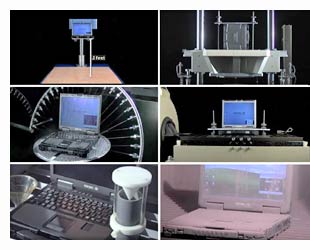 Most manufacturers do supply ruggedness specifications that help figuring out how much abuse a product can take without breaking. A notebook, for example, should not break if it falls off a desk, which generally means from a height of perhaps 2-1/2 feet in open position. However, if the notebook is also used while walking around on the job, then perhaps it should be able to survive a four foot fall or better.
Most manufacturers do supply ruggedness specifications that help figuring out how much abuse a product can take without breaking. A notebook, for example, should not break if it falls off a desk, which generally means from a height of perhaps 2-1/2 feet in open position. However, if the notebook is also used while walking around on the job, then perhaps it should be able to survive a four foot fall or better.
As far as operating temperature goes, the notebook should be able to start up and reliably run in whatever temperatures it is expected to operate. If that's in a desert climate, then it should be able to handle 120 degrees Fahrenheit or higher. If it's in a commercial freezer or an arctic setting, then it must function in those low temperatures. Also important is the ability to maintain peak performance over the entire operating temperature range.
Vibration can be a big issue for vehicle-mounted laptops, so testing must be conducted to ascertain that the product will survive on the job. Likewise for exposure to unusual humidity, altitude, salt fog, or whatever else the notebook may encounter while on the job.
There are many different testing standards, and tests can be conducted inhouse or by dedicated independent party testing labs. An often used standard is the MIL-STD-810G (MIL-STD-810H as of 2020) created by the United States Department of Defense. It is a very comprehensive document discussing environmental engineering consideration and laboratory testing standards.
Note, however, that the MIL-STD-810 documents do not mandate standards or set minimum goals for the various tests; for the most part they simply describe how testing is to be conducted. This leaves considerable room for interpretation, and it is therefore important for manufacturers of rugged notebooks to provide detailed information on what tests were conducted, how exactly they were conducted, what the results were, and what those results actually mean. The claim that a product is "MIL-STD-810G/H tested" is not enough, and prospective customers should ask for more detail.
Current status
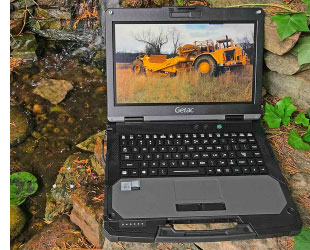
While rugged tablets have gained ground in various industrial and vertical market applications, conventional rugged laptops remain popular. Most suppliers of such specialized laptops offer both semi-rugged and fully rugged models, with the latter generally heavier and more expensive.
Weight, however, has become an issue for many customers, and several manufacturers are now offering both slimmed-down fully rugged machines as well as beefed-up semi-rugged models in a lower weight range.
By 2021, long-time market leader Panasonic remained on top with its line of THOUGHBOOK branded rugged laptops. Getac and Dell offer strong competition, with Durabook, DT Research, Winmate and an increasing number of OEMs are also offering state-of-the-art rugged laptops.
During 2021, most rugged laptop manufacturers offered Intel 11th generation "Tiger Lake" Core processors in their high-end products. In our opinion, the switch to Tiger Lake represents a milestone in rugged laptop performance, efficiency and functionality thanks to the platforms greater optimization potential for specific hardware and specific deployment targets. In addition, Tiger Lake brought full support of Thunderbolt 4 with its support for dual external monitor support, high-speed data transfer, and both downstream and upstream charging.
Another recent trend is toward trimming size and weight from fully rugged laptops. Whereas in the past the weight difference between semi-rugged and fully rugged models was several pounds, that gap has shrunk considerably. Both semi and fully rugged laptops are more compact and weigh less now, thanks in part to increasing battery density, the switch from rotating to solid-state storage as well as replacement or miniaturization of peripherals or interfaces that used to take up a lot of space.
In 2025, there was remarkable parity in the fully semi-rugged and fully rugged laptops offered by the leading vendors. In addition to offering the latest processor technology, vendors also emphasized "AI-readiness" in their products to appeal to customers' interest in running AI-based or AI-assisted software and utilities.
--Conrad H. Blickenstorfer, Ph.D.



